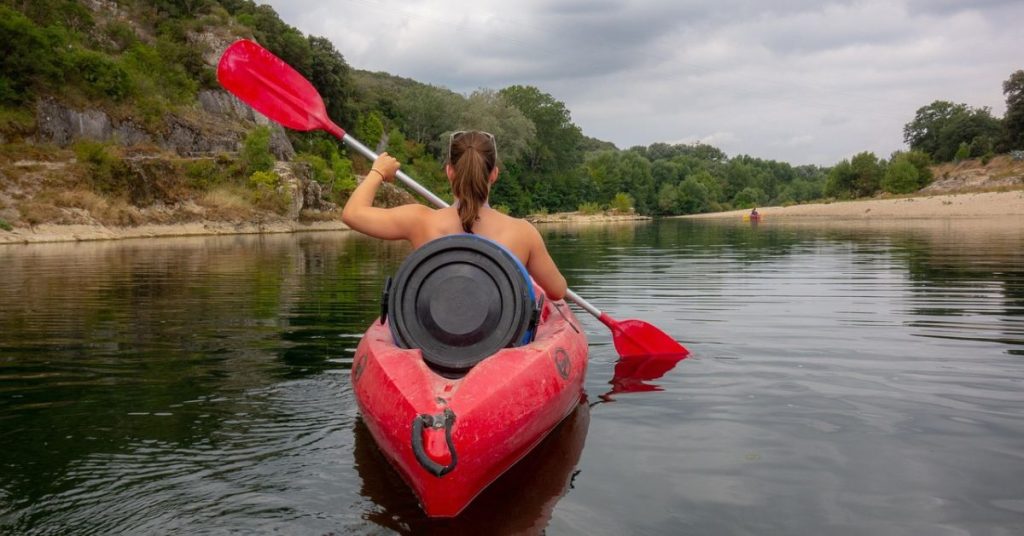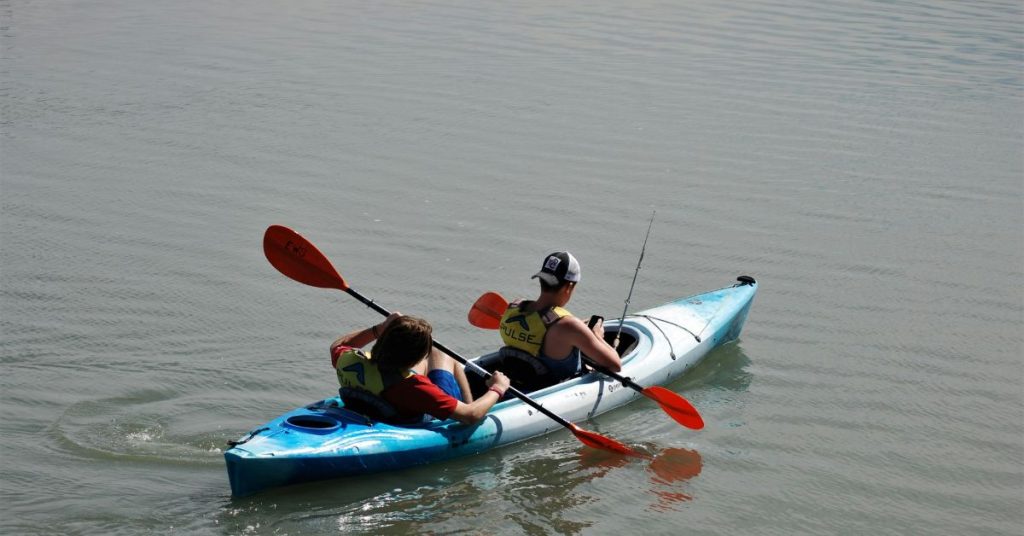Ever found yourself with a two-person kayak but no paddling partner? Whether you bought a tandem kayak for family outings, ended up renting one, or just want to head out solo, you might be wondering—can one person use a two person kayak?
The short answer? Yes, you can paddle a two-person kayak by yourself. But it’s not as simple as hopping in and taking off. There are a few things to consider, like where to sit, how to balance the weight, and the best way to maneuver. With the right setup and technique, you can turn that tandem into a perfectly good solo ride. Let’s break it down.

Understanding the Design of a Two-Person Kayak
Key Differences Between Solo and Tandem Kayaks
A tandem kayak isn’t just a bigger version of a solo kayak—it’s built differently. First, it’s longer and heavier, making it harder to transport and control alone. The seating is spaced for two people, meaning if you sit in the wrong spot, the kayak can feel unbalanced. The hull is usually designed for stability rather than quick turns, which affects how easily it moves through the water.
Challenges of Solo Paddling a Tandem Kayak
Paddling a two-person kayak alone comes with a few obstacles. The biggest issue is weight distribution—if you sit in the back seat, the front end can lift, making steering tough. Sit too far forward, and you lose control. Maneuverability is another challenge since tandems are longer and take more effort to turn. Plus, their size makes them more affected by wind, which can push you off course more easily than in a smaller, solo kayak.
That said, these challenges don’t mean you can’t do it—you just need to know how to adjust.
How to Paddle a Two-Person Kayak Alone Successfully
Optimal Seating Position for Solo Paddling
Where you sit makes all the difference when paddling a tandem kayak alone. Sitting in the back leaves the front too light, making steering a nightmare. Sitting in the front makes the back too heavy, causing drag. The best spot? The middle—but most tandems don’t have a center seat.
If possible, move an adjustable seat to the middle. If that’s not an option, sit in the back and use ballast (extra weight) in the front to balance things out. A dry bag filled with water, a cooler, or even a sandbag can help even out the weight and make paddling smoother.
Paddling Techniques for a Tandem Kayak
Since tandems are longer, they don’t turn as easily as solo kayaks. To stay in control, use wider strokes rather than quick, short ones. A longer paddle also helps since you’ll need extra reach to compensate for the kayak’s width.
For better tracking (staying in a straight line), keep your strokes even and controlled. If the kayak starts veering off course, use a sweep stroke (a wide, circular stroke) on the opposite side to correct it. If your kayak has a rudder or skeg, use it—it makes a huge difference in keeping your direction steady.
With the right setup and technique, paddling a tandem solo is totally doable. Next, let’s talk about how to make it even easier with the right gear.
Modifications & Equipment to Improve Solo Use
Adjusting the Kayak Setup
If you’re paddling a tandem kayak solo often, a few tweaks can make a big difference. Adding a solo seat in the center (if your kayak allows) gives you the best balance and control. If that’s not possible, sitting in the rear and using foot braces helps with stability and efficient paddling.
A rudder or skeg can also make solo paddling much easier by keeping the kayak tracking straight, especially in windy conditions or strong currents. Many tandem kayaks come with a rudder attachment option, so it’s worth considering.
Gear Recommendations for Solo Paddling
Having the right gear makes solo paddling smoother. A longer paddle (around 240-260 cm) is ideal since tandems are wider, and you need the extra reach.
For better weight distribution, use lightweight ballast—a dry bag filled with water, a small cooler, or even a bag of sand in the front can help keep the kayak balanced.
Since tandem kayaks are heavier, a kayak cart is a game-changer for solo transport. Look for a lightweight, foldable one to make getting to and from the water easier.
With these adjustments, paddling a tandem solo feels a lot more natural. Next, let’s go over when a two-person kayak might not be the best choice for solo use.

When a Two-Person Kayak Might Not Be Ideal for Solo Use
Situations Where Solo Paddling a Tandem is Difficult
Paddling a tandem kayak alone works in most situations, but there are times when it’s more trouble than it’s worth.
Strong winds and currents – A longer, bulkier kayak catches more wind, making it harder to stay on course. In rough waters, you’ll struggle to control it alone.
Long-distance or endurance paddling – Tandems are heavier, meaning you’ll burn more energy trying to keep up speed. Over long distances, this can get exhausting.
Narrow rivers and technical waters – Tandems aren’t as nimble as solo kayaks. If you’re navigating tight turns, rapids, or obstacles, a longer kayak can be a hassle.
When to Consider Buying a Solo Kayak Instead
If you find yourself constantly fighting your tandem kayak, it might be time to switch to a solo one.
Performance vs. convenience – A solo kayak is lighter, easier to maneuver, and built for single paddlers. If you mostly paddle alone, a solo kayak will be more enjoyable.
Cost of modifying vs. buying new – Adding a new seat, ballast, and a rudder can improve a tandem, but if you’re spending that much, investing in a solo kayak might make more sense.
Best solo kayak options – If you need speed and efficiency, a touring kayak is ideal. If you want stability and ease, a recreational kayak works best. Fishing? A wider, sit-on-top kayak is the way to go.
Tandems can work solo, but they aren’t always the best choice. If you’re struggling more than enjoying the water, it might be time for an upgrade.
Final Tips and Recommendations
Paddling a tandem kayak solo isn’t as tricky as it seems—as long as you set yourself up for success.
Balance is everything – Sit as close to the center as possible, or use ballast in the front to even out the weight.
Use the right gear – A longer paddle helps with reach, a skeg or rudder improves tracking, and a kayak cart makes transport easier.
Master your technique – Use wide, controlled strokes to stay on course, and adjust your paddling style to compensate for the kayak’s length.
Be mindful of conditions – Strong winds, currents, and narrow waterways make solo paddling harder. Pick your spots wisely.
Practice and experiment – Every kayak handles differently. Test out different setups and techniques until you find what works best for you.
With the right approach, a tandem kayak can work just fine for solo adventures. It might take some adjustments, but once you get the hang of it, you’ll be gliding across the water with ease.
Conclusion
Yes, you can paddle a two-person kayak solo—it just takes the right adjustments. Balance the weight, use the right gear, and tweak your paddling technique, and you’ll be good to go.
Every kayak handles differently, so don’t be afraid to experiment. Try different seating positions, test out ballast options, and practice your strokes. The more you get out on the water, the easier it will become.
Also Read
